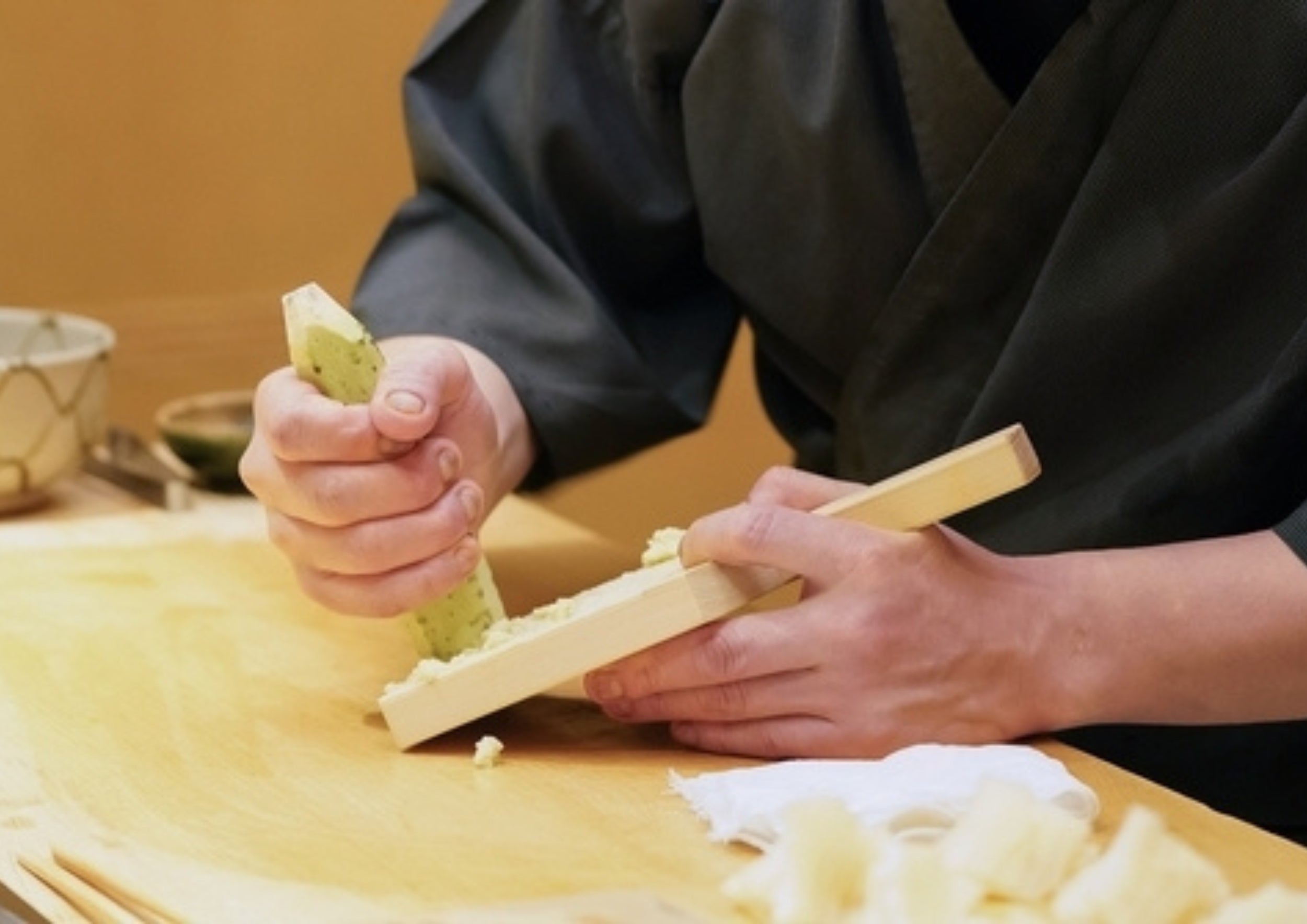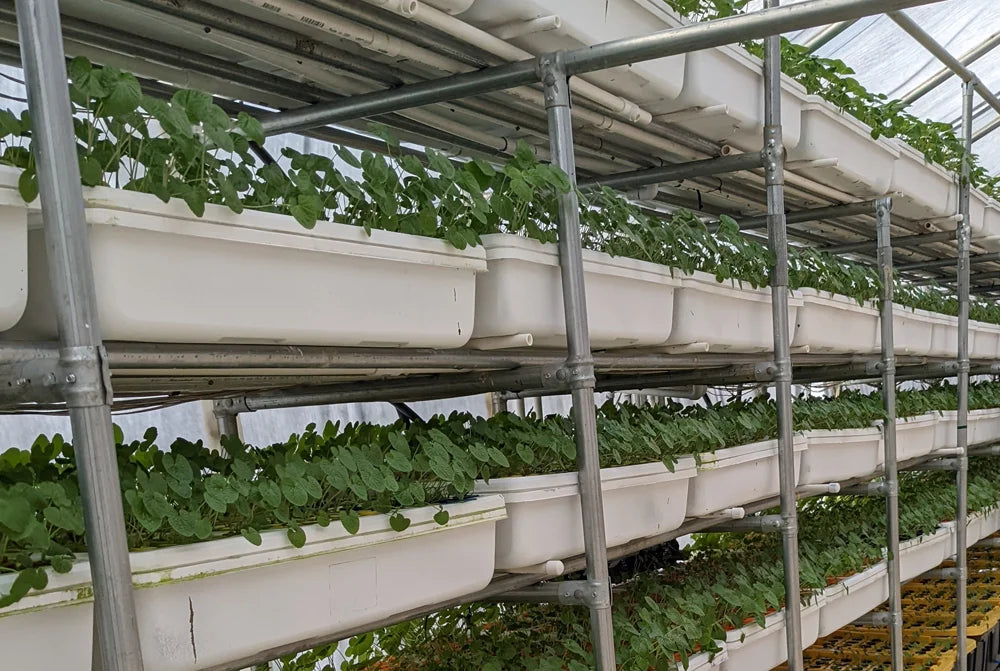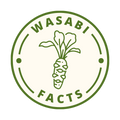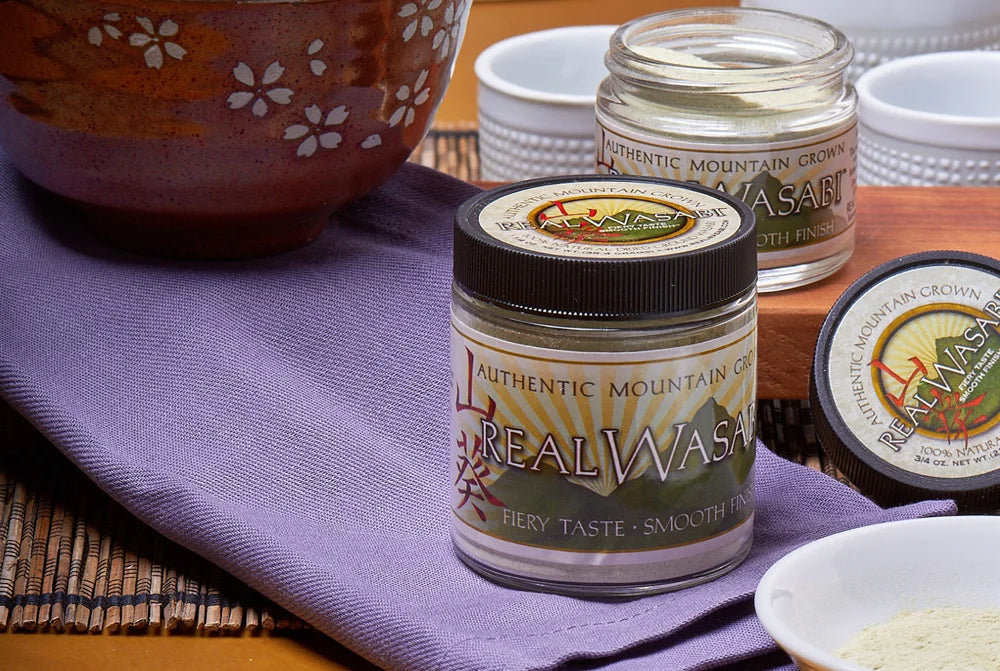WASABI DATABASE
REFERENCE DIRECTORY - WASABI NEWS Real Wasabi LLC has been in the business of growing, importing and promoting "Real Wasabi" for longer than anyone in North America. We have acquired a wealth...
Most "wasabi" sadly isn't authentic - and most wasabi products contain no wasabi whatsoever. Unlike “faux wasabi,” made from horseradish, mustard, and food coloring that assaults the sinuses when eaten, Real Wasabi™ is heralded by chefs worldwide for its unique, agreeable, short-lived heat and nuanced sweet aftertaste. We refer to its memorable flavor as Fiery Taste, Smooth Finish™.

At Real Wasabi, we're not just growers; we're connoisseurs. With every rhizome we cultivate, we uphold the legacy of genuine Wasabia japonica, ensuring you get nothing but the best real wasabi in the US.

Real Wasabi, LLC has been a beacon of authenticity in the wasabi and culinary world for nearly 20 Years. Our Wasabia japonica products have graced countless dishes in renowned fine restaurants and family kitchens. Our unwavering commitment to quality served to establish us as a respected purveyor worldwide and has cemented our reputation as the trusted choice for both culinary experts and passionate foodies.

Since our inception in 2005, Real Wasabi has embarked on a relentless quest perfection of our for wasabi products. Through rigorous research and cultivation techniques, we've mastered the art of growing authentic Wasabia japonica. Our dedication is evident in every wasabi rhizome, petiole, leaf, and flower, reflecting our deep-rooted passion for celebrating the authenticity of genuine wasabi and its rich heritage.

In the serene landscapes of the North Carolina Mountains, our wasabi plants flourish. Bathed in the pure waters of natural spring fed streams, they grow slowly under the watchful eyes of Mother Nature (and us!). This "Sawa" water grown method takes longer. Super pristine environs ensure that every wasabi plant that we cultivate carries the pure nutritional essence and distinctive flavor of its natural habitat.

Dive into the comprehensive insights and plumb the depths of wasabi industry perspectives with our exclusive "Wasabi White Paper Series."
You'll get instant access to our acclaimed first, "The Magical Alchemy of Real Wasabi" white paper, which will elevate your knowledge about transformations of both authentic wasabi flavors and enchanting chemistries responsible for the healthful catalyzing bio-active compounds..


Store-bought wasabi might just be an imposter! Real wasabi in the US is rare, and most products out there are a mix of horseradish, Chinese mustard, and food coloring.
Don't settle for less. Choose Real Wasabi.
REFERENCE DIRECTORY - WASABI NEWS Real Wasabi LLC has been in the business of growing, importing and promoting "Real Wasabi" for longer than anyone in North America. We have acquired a wealth...
Pacific Coast Wasabi: Faster turnaround with a new approach to production Lambrecht's growing methods are in stark contrast to Pacific Coast Wasabi, a Canadian company that is one of the...
How to Care For Your Wasabi Plant Wasabi is one of the most difficult plants to cultivate and maintain. It is very picky about its environment, temperature, humidity, and...